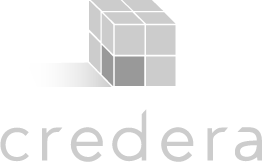by Alisha Janes
With the rising number of English-language learners in Colorado, many parents searching for quality schools need to consider the quality of language instruction. Yet, the wide variety of programs and approaches make comparing schools for English-language learners a complex task. Here are a few key considerations for parents, including the type of program, the types of supports that are provided, how progress is measured, and the school environment.
Academic development:
The most important factor to consider when comparing programs for language learners is the need for students to continue their development in all academic areas. Learning a second language is a natural process that takes time. While it may vary across learners, it can take too long for students to ignore other subjects while they try to learn English. How this is addressed depends on the school’s program. In some, this access to other content material is done through instruction in a learner’s native language; in other programs, teachers provide language support to help learners understand lessons in English. Yet other programs take students out of their traditional classroom to provide direct instruction in English that should relate to what students are learning in their classes. Check out this helpful link that helps explain the differences in programs used for English-language learners.
ELL teacher preparation:
No matter what program model a school uses to help English-language learners, an important question to ask is how teachers have been prepared. Different states require different levels of preparation, and requirements can differ across programs as well. Teachers providing extra support to students in traditional settings should be able to explain how they help students understand the English being used in their lessons. Some possible strategies teachers might list include:
- Using gestures and photos to add extra context to language,
- Incorporating real objects to add meaning,
- Teaching in thematic units to help familiarize students with vocabulary, and
- Allowing students to work in groups or with a partner.
Teachers should also be able to articulate how they focus on key academic vocabulary to help English-language learners.
Measuring progress:
Another important question for parents is how a student’s progress will be measured. Research has shown that students who remain in programs designed for English-language learners for longer periods of time do not perform as well as their peers who exited the program more quickly. Teachers should use short assessments throughout the year that monitor a student’s progress with language learning as well as their progress in other academic subjects. When students are being tested for their understanding of other content like math or social studies, they may require extra assistance or tools to make sure that they understand the questions and directions. The data from these short assessments should be used to provide students with help in areas where they need it most.
Attitudes about language learning:
Finally, a teacher and school’s attitudes regarding language learning is important. Bilingualism should be considered an asset and not a deficit and teachers should take responsibility for a student’s progress both in learning English as well as learning across subject areas. Students should not be punished for using their native language and overall should feel like they are part of a welcoming community that embraces their culture and native-language skills.
Alisha Janes is a fellow at Colorado Succeeds and is currently pursuing a Masters of Public Administration at the University of Colorado at Denver. Alisha’s previous experience include: coaching new teachers, teaching intervention lessons, and three years of teaching a Bilingual 5th grade class in Houston, TX.
 |
| 


